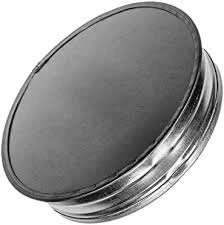Mobile:+86-311-808-126-83
Email:info@ydcastings.com
Understanding Impeller Vortex Dynamics in Fluid Mechanics Applications and Impact on Performance
Understanding Impeller Vortex Dynamics A Comprehensive Overview
In the realm of fluid dynamics, the behavior of fluids in motion is critically important across a variety of applications, including engineering, environmental science, and meteorology. Among the core components influencing fluid behavior are impellers and vortices. This article delves into the intricate relationship between impellers and vortex dynamics, shedding light on their principles and applications.
What is an Impeller?
An impeller is a rotating component found in pumps and various machinery that transfers energy from the motor to the fluid flowing through the system. The primary purpose of an impeller is to create fluid motion, facilitate circulation, and generate pressure. Impellers come in various designs, including centrifugal and positive displacement types, each serving specific functional requirements.
The design of an impeller significantly influences the flow pattern of the fluid. For example, a centrifugal impeller utilizes a rotating disk or blade that imparts radial acceleration to the fluid, pushing it outward from the center. This action generates a pressure difference that allows fluid to flow into the pump and be discharged at a higher pressure.
Understanding Vortex Formation
A vortex is a swirling flow characterized by its circular motion around an axis. Vortices are a natural occurrence in fluid dynamics and can form in a myriad of scenarios, particularly when there is a significant variation in pressure or velocity. The interplay between an impeller and the fluid can lead to the formation of vortices, which play a crucial role in the mixing, transport, and thermal behavior of fluids.
impeller vortex

When an impeller spins, it can induce vortex formation in its immediate surroundings, especially at the outlet. The energy imparted to the fluid leads to regions of low and high pressure, thus creating a swirling effect. These vortices can be categorized into two main types free vortices, which exhibit a constant angular momentum and occur in an unbounded region, and forced vortices, which arise in bounded situations, such as within a pump or turbine.
The Influence of Impeller Design on Vortex Dynamics
The design and geometry of an impeller greatly impact the characteristics of the vortices formed during operation. Factors such as blade angle, number of blades, and rotational speed all contribute to the vortex patterns created. For classic centrifugal pumps, the orientation and curvature of the blades can dictate the efficiency of fluid transport and the stability of the vortices generated.
For example, if an impeller's blades are too aggressively angled, they may induce turbulence, leading to chaotic vortex behaviors that can decrease the overall efficiency of fluid transport. Conversely, an optimally designed impeller can create stable vortices that enhance mixing and improve the efficiency of the system. Understanding this relationship is vital for engineers seeking to optimize pump performance in various applications, from industrial systems to recreational equipment.
Applications of Impeller Vortex Dynamics
The interplay between impellers and vortex dynamics has significant implications across various fields. In water treatment facilities, for instance, the knowledge of how vortices aid in mixing chemicals with water can lead to more efficient purification processes. In aerospace engineering, understanding vortex behavior around propellers enhances the design of more efficient aircraft. Moreover, in oceanography, studying vortices generated by underwater propellers can provide insights into the impact on marine life and sediment transport.
In conclusion, the study of impeller vortex dynamics is essential for improving the design and functionality of various systems in fluid dynamics. By grasping the principles governing impeller operation and vortex formation, engineers and scientists can enhance efficiency, optimize performance, and foster innovations in multiple industries. As we continue to explore these dynamic interactions, the potential for groundbreaking advancements in fluid dynamics remains vast and promising.
-
Why Should You Invest in Superior Pump Castings for Your Equipment?NewsJun.09,2025
-
Unlock Performance Potential with Stainless Impellers and Aluminum End CapsNewsJun.09,2025
-
Revolutionize Your Machinery with Superior Cast Iron and Aluminum ComponentsNewsJun.09,2025
-
Revolutionize Fluid Dynamics with Premium Pump ComponentsNewsJun.09,2025
-
Optimizing Industrial Systems with Essential Valve ComponentsNewsJun.09,2025
-
Elevate Grid Efficiency with High-Precision Power CastingsNewsJun.09,2025











